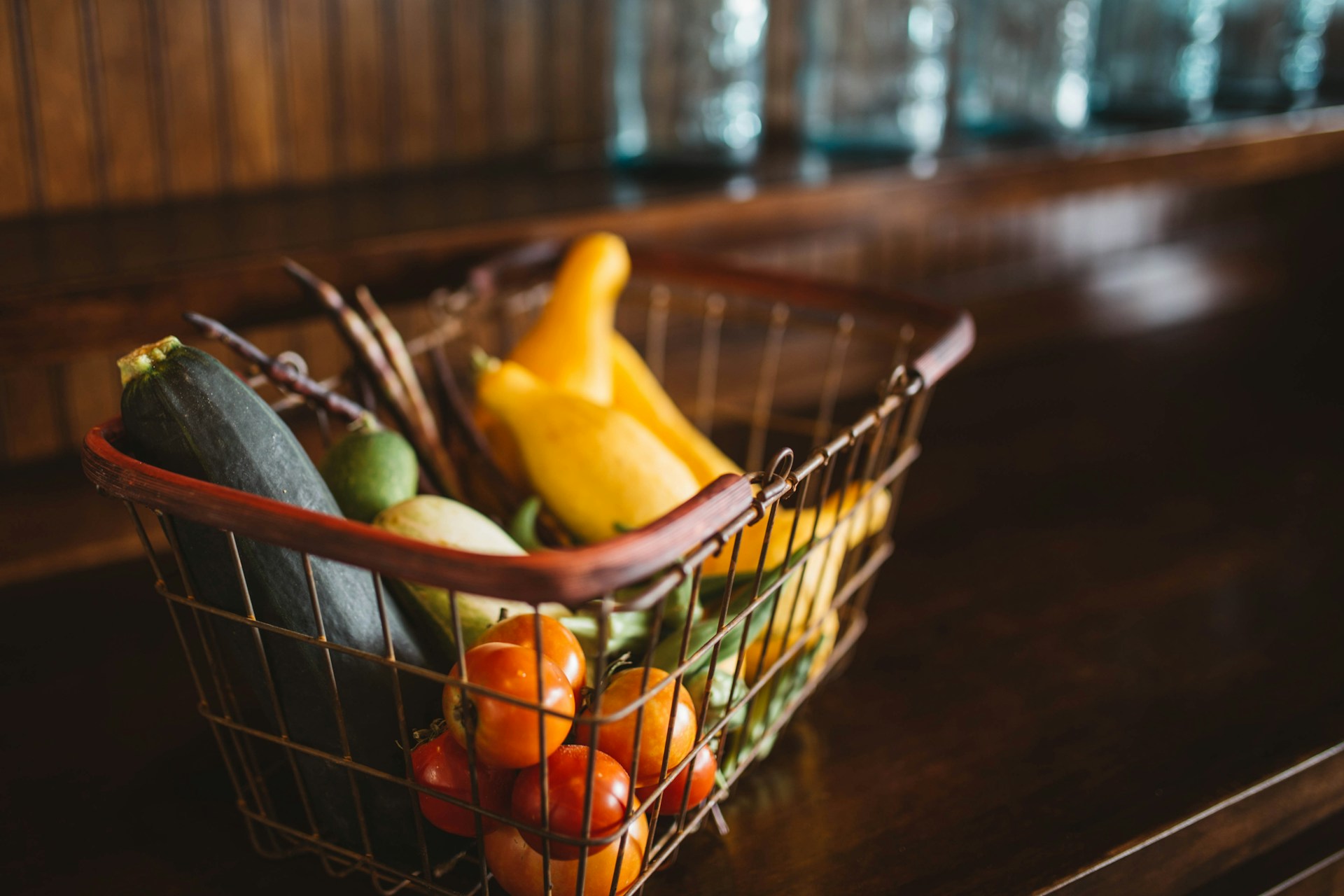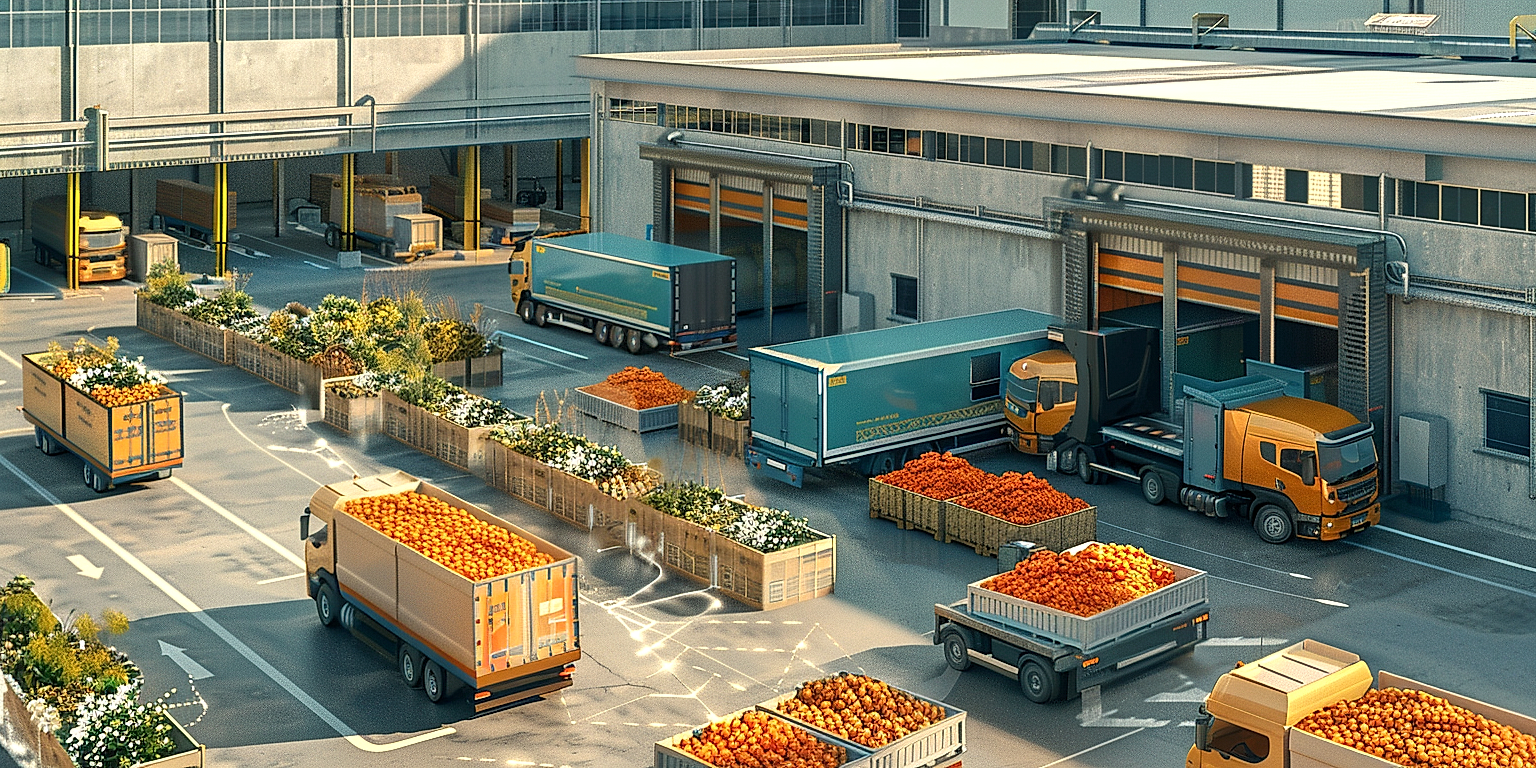In the ever-evolving world of produce shipping, efficient and strategic logistics management is crucial.
It signifies the difference between a successful operation and a logistical nightmare.
The blend of technology, customer expectations, and operational efficiency is crucial in this complex process.
Consequently, strict adherence to certain proven practices can yield significant benefits.
Understanding and implementing these practices provides competitive advantages for businesses.
This piece will be delving into some golden rules of handling logistics in produce shipping, aiming to enhance productivity and efficiency in your operation.
Contents [hide]
- Best Practices For Logistics Management In Produce Shipping
- 1. Maintain temperature control in produce storage/transport.
- 2. Embrace technology for better inventory tracking.
- 3. Regularly service and maintain transportation vehicles.
- 4. Adapt to Seasonal Changes and Demand
- 5. Implement efficient loading and unloading methods
- 6. Comply with food safety and hygiene standards.
- 7. Establish solid communication with suppliers/distribitors
- 8. Use sustainable packaging for environmental efficiency.
- 9. Train Staff in Proper Handling Procedures
- 10. Regularly Evaluate and Adjust Logistics Strategy
- The Bottom Line
Best Practices For Logistics Management In Produce Shipping
1. Maintain temperature control in produce storage/transport.
Maintaining temperature control in produce storage and transport is a crucial component in the logistics management of fresh goods.
Temperature regulation plays a significant role in preserving the freshness, quality, and safety of the produce.
The optimal temperature range varies depending on the type of produce, hence understanding and applying these requirements is essential.
By closely managing the temperature within storage and transport facilities, businesses can significantly reduce the risk of produce spoilage and quality degradation.
Produce such as fruits and vegetables are living products and continue their respiration process post-harvest, releasing heat in the process.
If this heat isn’t appropriately managed, it could result in a rise in storage temperature leading to faster degradation of the produce.
A good logistics system employs properly calibrated refrigeration units that can maintain precise temperatures throughout the storage and transit process.
Consider the use of temperature recording devices and systems that provide real-time data, enabling effective temperature regulation.
In cases of long-distance transport, the use of temperature-controlled vehicles and containers is a necessity to ensure that the produce reaches its destination in optimal condition.
The use of insulating materials within the storage area can help maintain consistent temperature levels, even in the face of external temperature fluctuations.
Remember, any temperature fluctuations, no matter how minor, can negatively impact the product’s shelf life and quality.
Frequent checking and validation of the refrigeration systems and temperature recording devices can help in avoiding any sudden and unexpected equipment failure.
Additionally, providing the necessary training to the staff involved in handling the produce can greatly reduce the chances of human error leading to temperature mishaps.
Moreover, the introduction of automated temperature control systems can eliminate the reliance on manual checks and considerably improve efficiency.
Lastly, incorporating practices like pre-cooling the transport vehicles prior to loading can also help in maintaining the desired temperature levels throughout the transport process.
2. Embrace technology for better inventory tracking.
One of the best practices in logistics management in produce shipping is the use of technology for inventory tracking.
This means making use of various technological advancements such as barcoding, RFID (Radio-frequency Identification), and other advanced software systems.
These technologies aid in easily managing and monitoring the stock levels of the produce during transportation.
Thus, embracing technology in inventory tracking ensures the produce is kept under correct conditions at all times.
It is important to understand that accurate inventory management is crucial towards minimizing losses and ensuring optimal freshness of the produce.
Technology such as real-time tracking helps in quickly adapting to any changes or discrepancies in the storage or transport conditions.
Furthermore, contemporary systems provide features such as automated inventory updating, making the process efficient and reducing manual errors.
They also help in predicting future demand and patterns, enabling you to plan your logistics better and effectively handle sudden shifts in demand.
There is a wide spectrum of inventory tracking technologies available, including cloud-based applications which allow easy access and real-time updating, ensuring that you always have the latest data at your fingertips.
This equips logistics managers with the vital information needed to make swift decisions, which often can mean the difference between maintaining produce freshness and incurring unnecessary losses.
Adopting such technologies also leads to increased accountability and transparency in the logistics chain.
By tracking the movement and storage conditions of the produce, any issues can be quickly identified, addressed, and prevented from recurring.
Using technology for inventory tracking does not only improve efficiency, but also results in significant cost savings.
In essence, embracing technology for better inventory tracking is no longer optional but a necessary step towards improving logistics management in produce shipping.
Therefore, businesses dealing with produce shipping must invest in training their staff to effectively utilize these technologies.
By doing so, they are not only ensuring the quality and freshness of their produce, but also enhancing their operation’s overall efficiency.
3. Regularly service and maintain transportation vehicles.
One of the most important factors in ensuring the successful shipping of produce is regular servicing and maintenance of transportation vehicles.
Without this crucial step, the risk of vehicles breaking down increases, potentially disrupting the entire supply chain and leading to losses and inefficiencies.
Regular servicing includes not just the mechanical components of the vehicle, but also the elements that come in direct contact with the produce.
This may include refrigeration units, loading and unloading mechanisms, and interior surfaces that could potentially contaminate the produce.
These should all be maintained to a high standard of cleanliness and functionality.
Maintenance tasks should be scheduled to avoid disrupting normal operations, ideally when the vehicles are not being used to transport produce.
These vehicles should also be inspected for any potential problems such as leaks or damage that could lead to produce being spoiled or contaminated during transit.
Investing in the upkeep of these vehicles is not just a matter of compliance with regulations, but also a crucial part of protecting the quality of the produce being shipped.
The frequency of these maintenance tasks should be determined by the vehicle’s usage and condition, as well as any industry standards or recommendations.
Taking this proactive approach to maintenance can avoid the cost and disruption of unexpected breakdowns, and can often extend the lifespan of the vehicle.
Tyres, brake systems, and engine components are amongst the many parts which require routine checks.
In addition, it is important to consider the environmental impact of the vehicles used in transporting produce.
Vehicles with low emissions and high fuel efficiency not only reduce your company’s carbon footprint, but they may also offer cost savings in terms of fuel usage and potential tax benefits.
Moreover, using vehicles that are in good condition and well-maintained can improve the company’s image and reputation, showing that it takes its responsibilities seriously.
In summary, regular servicing and maintenance of transportation vehicles is a critical aspect of logistics management in produce shipping, impacting not only the efficiency and reliability of operations, but also the quality of the produce and the reputation of the company.
4. Adapt to Seasonal Changes and Demand
One of the significant challenges in produce shipping logistics is the need to adapt to seasonal changes and demand.
In the world of agriculture, seasons play a critical role and significantly affect the availability and freshness of produce.
Understanding the seasonality of products can lead to better planning and organization, reducing waste and improving efficiency.
Moreover, produce demand also shifts seasonally, with consumers’ preferences changing with the availability of fresh produce.
Lorem ipsum dolor sit amet, consectetur adipiscing elit. Adapting to seasonal changes and demand ensures the consistency of supply and meets customer demands effectively.
Logistics managers need to stay ahead of these fluctuations by incorporating accurate forecasting methods to predict demand and supply changes accurately.
This predictive approach helps in preparing for any fluctuations in demand and ensuring that the supply chain does not encounter any severe disruptions.
Having a system in place that can instantaneously adapt to these changes can dramatically improve the efficiency of the supply chain.
Seasonal changes also require modifications in transportation and storage conditions to preserve the quality of the produce.
For instance, some fruits and vegetables might need cooler temperatures during summer months to prevent spoilage.
Therefore, transportation vehicles should have the capability to adjust their temperature settings to match the environmental and product-specific requirements.
Above all, the key to successfully adapting to seasonal changes and demand is to maintain close collaboration with suppliers and distributors.
Having open and regular communication can help in enhancing visibility throughout the supply chain and making necessary adjustments promptly.
Furthermore, technology can also be leveraged to gain insights into real-time market conditions, acting as a valuable tool for decision-making.
By taking all these factors into account, logistics management in produce shipping can more effectively and efficiently adapt to seasonal changes and fluctuating demand.
5. Implement efficient loading and unloading methods
The loading and unloading processes are fundamental aspects of logistics management in produce shipping.
A well-defined procedural framework for these operations can increase efficiency, minimize product damage, and enhance productivity.
If handled inappropriately, there is the high likelihood of product damage or wastage, leading to financial losses and potential reputational harm.
An agile loading process begins with an assessment of transportation capacity which helps to determine the volume of produce that can be ferried in a single trip. Adopting methodical arrangement results in safer transport, improved vehicle capacity utilization, and reduced freight costs.
It’s also advisable to establish standard operating procedures for loading and unloading to ensure consistency.
Both the speed and safety of the loading and unloading processes hinge on the efficiency of these standard procedures.
Furthermore, it is essential to invest in appropriate equipment for the loading and unloading processes. This includes proper handling tools and machine-operated equipment, such as forklifts or conveyor systems, depending on the scale of operations.
Implementation of technology solutions can also improve efficiency in these processes. For example, using digital loading plans, scanners, or RFID technology can streamline the workflow and minimize human error.
There should also be a strong emphasis on safety measures during these processes. This includes safety equipments for workers, reducing the risk of accidents that can lead to delays and additional costs for produce shippers.
Properly planned loading and unloading processes also save time and this reduced turnaround time contributes to overall logistical efficiency.
The placement of products in the vehicle also influences the freshness and quality of the produce during transit. Typically, produce vulnerable to bruising should be placed at the top while sturdy produce can be arranged at the bottom.
Moreover, maintaining a log of loading & unloading operations can provide critical insights for future improvements.
In so doing, companies can track workforce productivity, identify bottlenecks or inefficiencies, and take remedial measures.
In the end, efficient loading and unloading methods contribute substantially to smooth logistics operations and consistent timely delivery of fresh and high-quality produce.
6. Comply with food safety and hygiene standards.
Food safety and hygiene standards are essential in the field of produce shipping and logistics.
Produce is highly susceptible to disease and contamination, making the need for a robust food safety framework crucial.
Local and international food safety regulations often dictate these standards.
These regulations exist to ensure that food products are handled, stored, and transported in a manner that reduces the risk of foodborne illness.
Non-compliance with food safety and hygiene standards can lead to severe consequences, including financial penalties, reputational damage, and even health risks to consumers.
Produce shippers, therefore, need to understand the specific food safety requirements that their products need to comply with.
This includes knowing the appropriate levels of cleanliness, temperature control, humidity, and other factors that can affect food safety.
Some standards might require that produce be stored away from allergenic substances, while others might mandate hygiene practices for workers who handle the produce.
To adequately comply with these standards, logistics managers must integrate them into each level of their operations.
Every step of the logistics process, from harvesting the produce to packaging and delivery, must be conducted while adhering to these stringent guidelines.
Training staff in food safety protocols is another significant step towards achieving compliance.
Continuous monitoring is needed to ensure that these standards are being consistently followed.
Regular audits and inspections can help here, as they offer opportunities to correct non-compliances and prevent future violations.
Produce shippers must also be prepared for the advent of new regulations or the updating of existing ones.
Keeping abreast of changes in food safety standards and adapting the logistics process accordingly is a constant responsibility of produce shippers.
Simply put, complying with food safety and hygiene standards is not just a regulatory requirement but also a priority for ensuring the health and safety of consumers.
7. Establish solid communication with suppliers/distribitors
In the realm of produce shipping, solid communication with suppliers and distributors forms a critical cornerstone of effective logistics management.
Both upstream and downstream communication channels need to be clear, unambiguous, and systematic to reduce the chances of errors occurring during the transportation phase.
The usage of digital communication platforms can immensely facilitate this interaction by providing a consistent and traceable record of all communication.
By establishing robust lines of communication, delays, miscommunications, and potential disputes can be significantly reduced.
An integral aspect of this communication revolves around delivering exact and timely information about the type, quantity, destination, and expected arrival time of the produce.
This information must be communicated accurately to prevent any misunderstandings that could lead to delivery errors or inefficiencies.
Open dialogue should also be maintained around the handling, storage and loading procedures to ensure these are in line with the suppliers or distributors’ specifications.
Additionally, part of this communication should involve the sharing of regular updates and valuable feedback regarding the transportation service’s performance.
Addressing any identified challenges in a timely manner will help keep the supply chain running smoothly with minimal disruptions.
This will also ensure that the specific requirements of both parties are met and that they collectively work towards the prime goal of delivering fresh, high-quality produce on time.
It cannot be overemphasised that prompt, transparent, and regular communication with suppliers and distributors is pivotal in establishing reliable operations, uncovering potential issues ahead of time, and rectifying these in a timely fashion to prevent avoidable delays or losses.
Furthermore, maintaining strong relationships with suppliers and distributors through effective and respectful communication can also lead to preferable terms of trade, bringing about financial benefits.
In essence, the workability, efficiency, and success of the logistics management process in the produce shipping industry largely depend on a strong and effective communication network.
By putting these practices into action, businesses can ensure that their logistics strategy is not only effective but also contributes towards their overall success and profitability.
8. Use sustainable packaging for environmental efficiency.
One of the fundamental ways to embrace sustainability in logistics management is to use eco-friendly packaging for transporting produce.
Switching to sustainable packaging serves as a practical solution that cuts down on carbon footprint and reduces landfill waste.
Additionally, sustainable materials offer improved efficiency in terms of space and weight, which can contribute to fuel savings during transportation.
Produce shippers are now exploring the use of biodegradable packing peanuts, recyclable plastic trays, and compostable cling wrap as alternatives to traditional packaging materials.
Similarly, incorporation of recycled materials in packaging forms, such as boxes, pallets, and containers, also lend to the reduction of environmental impact.
Environmentally-friendly packaging not only embraces a sustainability philosophy but also can offer potential cost savings in the logistics process.
Moreover, sustainable packaging solutions are often more durable and could potentially protect the produce better during transport, thereby reducing the possibility of damage and waste.
In addition to these benefits, businesses that adopt green packaging methods oftentimes find that it aids in improving their corporate image.
Consumers have become increasingly conscious about the environmental impact of their purchasing decisions, and businesses that have adopted sustainable practices often experience improved market perception and increased customer loyalty.
However, it’s essential that shippers carry out a thorough analysis before making the switch to greener packaging options.
It’s vital to ensure they’re financially viable, the quality of produce isn’t compromised, and they align with the company’s sustainability goals.
While making the shift to sustainable packaging, working with packaging engineers can be highly beneficial to create innovative, custom solutions that protect your produce, are cost-effective, and benefit the environment.
Further, using packaging optimization software can help shippers design and select the most efficient and sustainable packaging styles and materials.
To summarize, a focus on sustainable packaging in logistics management is becoming both an environmental responsibility and a business necessity.
Thus, produce shippers should take definitive steps towards transitioning to sustainable packaging solutions and make it an integral part of their logistics strategy.
9. Train Staff in Proper Handling Procedures
For effective logistics management in produce shipping, businesses must invest in training their staff in proper handling techniques.
Quality training is pivotal in ensuring that all operational processes are conducted in a professional and efficient manner.
This is because produce, fresh foods, and beverages require certain special handling protocols that other products don’t.
Staff training is not only about equipping personnel with basic produce handling skills, but it also entails providing them knowledge about the nature of different produce types and their specific handling and storage requirements.
For instance, temperature-sensitive items like tomatoes and berries require special attention and care during transit, and this can only be ascertained if the staff is properly trained.
Thus, training is essential to maintain the quality of the produce and mitigating waste caused by improper handling techniques.
This does not only enhance customer satisfaction, but it can also positively influence profit margins and the company’s reputation.
Furthermore, training can also cover safety protocol, both for the staff’s wellbeing and the prevention of produce mishandling.
Enabling your logistics management team with adequate knowledge of produce handling and safety methods goes a long way in achieving successful shipping and distribution.
Moreover, this strengthens relationships with suppliers by ensuring their products remain in the best condition possible, preserving long-term partnerships.
Regular training sessions and workshops can help instill these practices and further the growth and efficiency of your logistics operations.
Keeping the staff updated about the evolving industry standards or new handling tools and techniques also fosters an environment of continuous improvement and skill enhancement.
Therefore, a robust training program is crucial for businesses keen to up their ante in produce shipping logistics management.
Many leading companies hire professional trainers or collaborate with training institutions to provide their logistics teams with comprehensive courses.
This way, they ensure that their handling procedures are in line with the best industry standards and the handling procedures are performed accurately, systematically, and efficiently.
10. Regularly Evaluate and Adjust Logistics Strategy
In the complex and constantly changing world of produce shipping, it is imperative to consistently review and modify your logistics strategy.
Over time, certain approaches or practices that once seemed effective may no longer yield the same results, necessitating adjustments or even full-scale revisions.
The fast-paced nature of the logistics industry and the myriad factors that can affect it – from technological advancements, changing consumer demands, market fluctuations, and regulatory shifts – require an adaptive and flexible strategy.
A static, one-size-fits-all approach will not serve well in the dynamic realm of logistics management, where continuous innovation and adaptation are key to staying ahead.
Because of this, logistics plans should not be considered fixed but rather living documents that are regularly evaluated and adjusted in response to various changes and developments.
Simply put, you cannot rely on what worked yesterday to work just as well today or tomorrow without regular assessments and strategic adjustments.
Regularly evaluating your strategy also allows you to systematically collect, measure, and analyze data on every element of your logistics operations – which can provide valuable insights and identify potential areas for improvement.
Key performance indicators (KPIs), including transit times, efficiency of loading/unloading methods, losses due to damage or spoilage, and adherence to delivery schedules, should be regularly tracked and reviewed.
Any anomalies, unexpected trends, or persistent issues should be flagged for further investigation and resolution.
Adjustments to the strategy should be made based on these findings, and not on hunches or guesses – evidence-based decision-making is the key.
Systematic assessments are also especially important when introducing new technology or implementing significant changes to procedures or operations – as they allow for trial and error and gradual refinement.
Furthermore, keep in mind that adjustments to your logistics strategy may not be a one-off event but rather an ongoing and iterative process.
You may need to try out different solutions, evaluate their effectiveness, make further tweaks and refinements, and then test again, in a continuous loop of improvement.
Lastly, regularly evaluating and adjusting your logistics strategy can drive ongoing improvement and ultimately lead to better efficiency, higher service quality, and improved customer satisfaction.
Take a proactive approach, keep your finger on the pulse of changing trends and dynamics, and strive for continuous improvement in your logistics operations to stay competitive.
The Bottom Line
Efficient logistics in the fruit and vegetable industry requires a comprehensive approach, focusing not only on maintaining temperature control during storage and transport but also on harnessing technology for optimal inventory tracking.
There is an essential need for routine vehicle maintenance and an understanding of seasonal changes and consumer demand.
Equally important are swift and efficient loading/unloading methods, stringent adherence to food safety and hygiene standards, and robust communication lines with suppliers and distributors.
The use of sustainable packaging materials further boosts environmental efficiency.
Staff training in appropriate handling procedures and a continuous review and modification of logistics strategy are crucial.
All these elements work in unison to enhance the quality of produce, limit wastage, and increase profitability.




